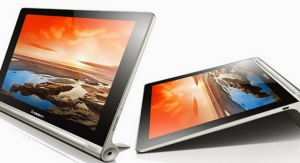Last Updated on September 20, 2024 by Mathew Diekhake
 The Android operating system ships with a recovery console that can be booted into which users will know as the recovery mode. That recovery console is useful for doing a few things like clearing the cache if you need it, performing a factory reset if your device isn’t working well, or updating the operating system by using official ROM signed zip files.
The Android operating system ships with a recovery console that can be booted into which users will know as the recovery mode. That recovery console is useful for doing a few things like clearing the cache if you need it, performing a factory reset if your device isn’t working well, or updating the operating system by using official ROM signed zip files.
While the features you get with the stock recovery are good enough for effectively recovering a device from basically any bad situation, there are also a lot of features that are left out that could be there, not so much to help people fix problems but instead just have fun with the Android operating system.
There are plenty of unsigned zip files out there that would love to be flashed from a custom recovery image too, but Android doesn’t make that possible in its default state. What you can do though is take advantage of a custom recovery, replacing the stock version with one that has been developed by third-party developers. A custom recovery allows for the flashing of unsigned zips almost always, and TWRP is no exception.
This is what you need to install TWRP Recovery on Lenovo Yoga HD 10+ WiFi tablet.
Details We Should Know
- The custom recovery images available in this guide are only to be installed on the Lenovo Yoga HD 10+ WiFi tablet. Most devices have a custom recovery image developed specifically for it, and you shouldn’t install one that is intended for another device unless advised it is okay by a professional.
Files We Need
- Download on your computer the latest version of TWRP Recovery: Primary (Americas) | Primary (Europe).
- Download on your computer the platform-tools from the Android SDK.
How to Install TWRP Recovery on Lenovo Yoga HD 10+ WiFi Tablets
1. Make sure you’ve installed the universal ADB drivers on the computer.
2. You need to have the platform-tools part of the Android SDK on your computer. From the download link scroll down until you get to the command line tools section and then download the package that is made for your operating system.
3. Once you have the SDK Manager on your computer, check the box only for the platform-tools, so you end up with the adb and fastboot binaries installed on the computer. (You could also install the drivers from there as well if you wanted.)
4. Pick up the Lenovo Yoga HD 10+ WiFi tablet and navigate to the Settings > About and tap your finger over the build number at least seven times so that the Developer Options menu becomes unlocked. Then go back to the Settings, enter the Developer Options menu and then enable the USB debugging mode.
5. Connect the Lenovo Yoga HD 10+ WiFi tablet to the computer by using the USB cable that it comes with.
6. Now on the computer open the Command Prompt and type the adb reboot bootloader command and hit “Enter” on your keyboard to get the Huawei Y300 smartphone into the bootloader mode and ready for the flashing.
7. Make sure you have copied the TWRP image file to the same folder as the adb and fastboot binaries. Also when you’re there, change the name of the TWRP to “twrp.img” by right-clicking the mouse pointer on it and selecting the “Rename” option from the menu.
8. From the command line type the fastboot flash recovery twrp.imgcommand and hit “Enter” on your keyboard to flash the custom recovery.
9. Lastly type the fastboot reboot command and as soon as the Lenovo Yoga HD 10+ WiFi tablet reboots, hold down the key combination to boot directly into the recovery mode. (If you don’t sometimes the stock recovery will wipe over the custom recovery you just installed.)
The custom recovery image for the Lenovo Yoga HD 10+ WiFi tablet is now installed, and you are ready to boot into recovery mode and start flashing the custom ROM or rooting zip files.
